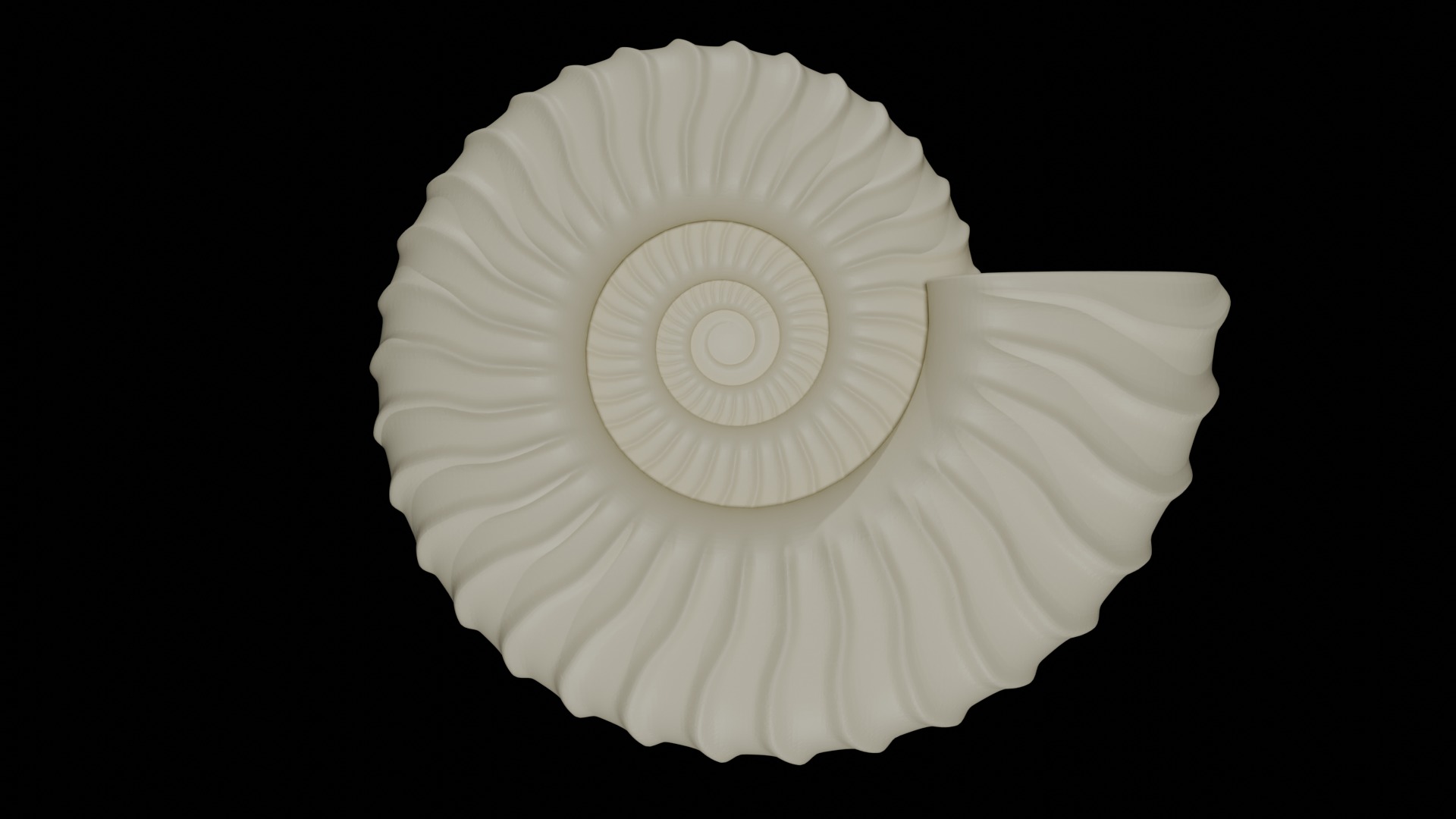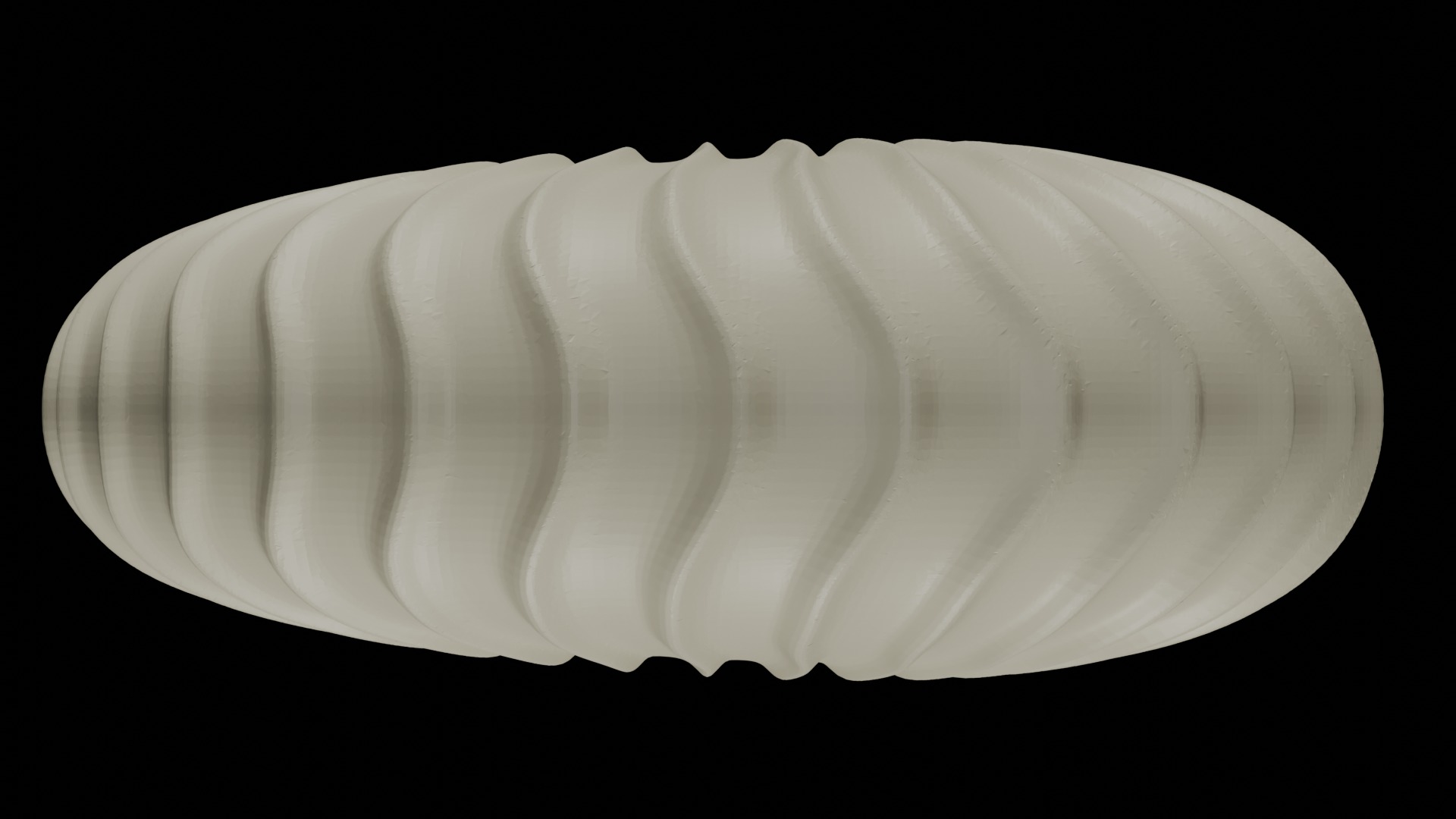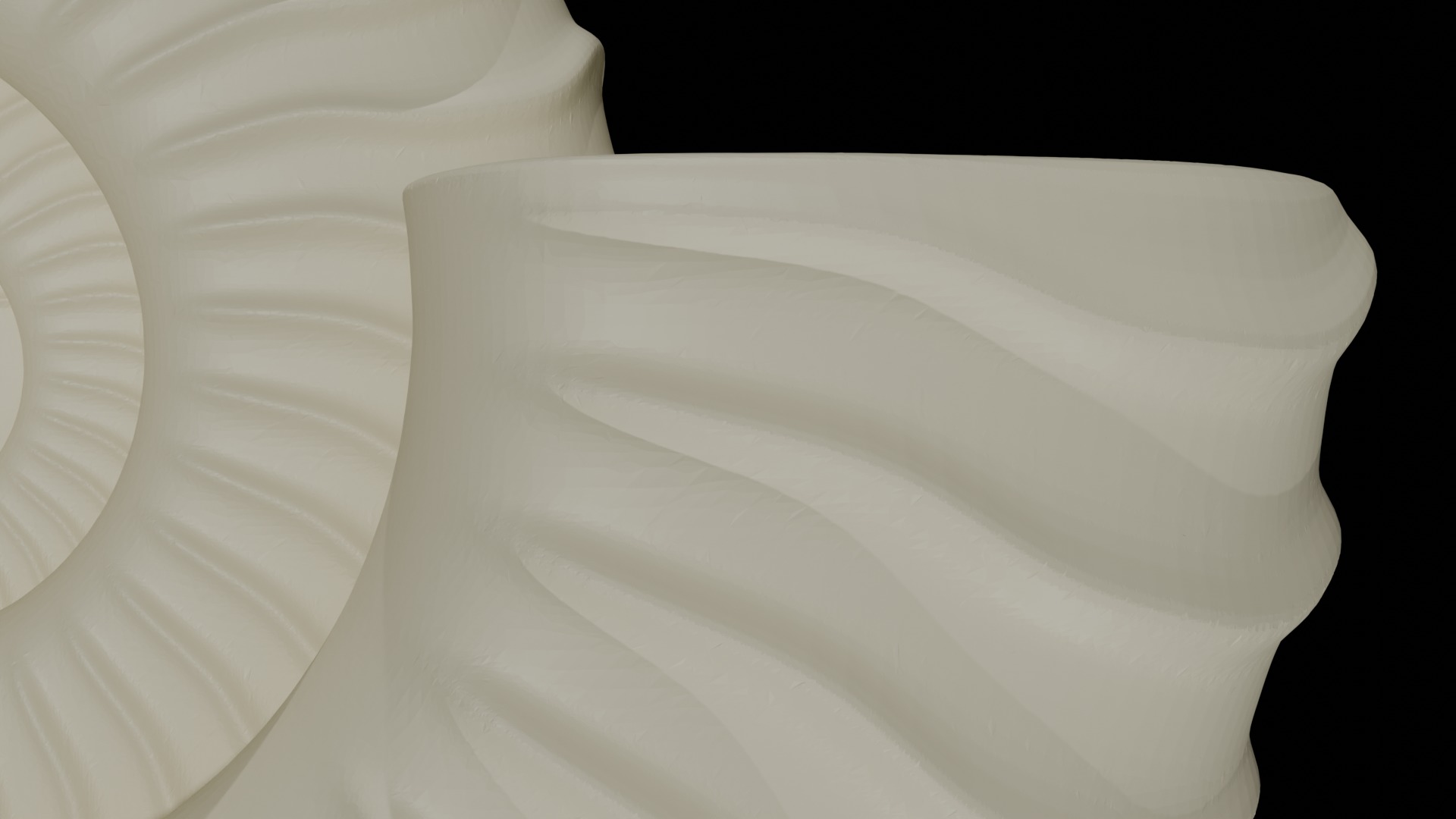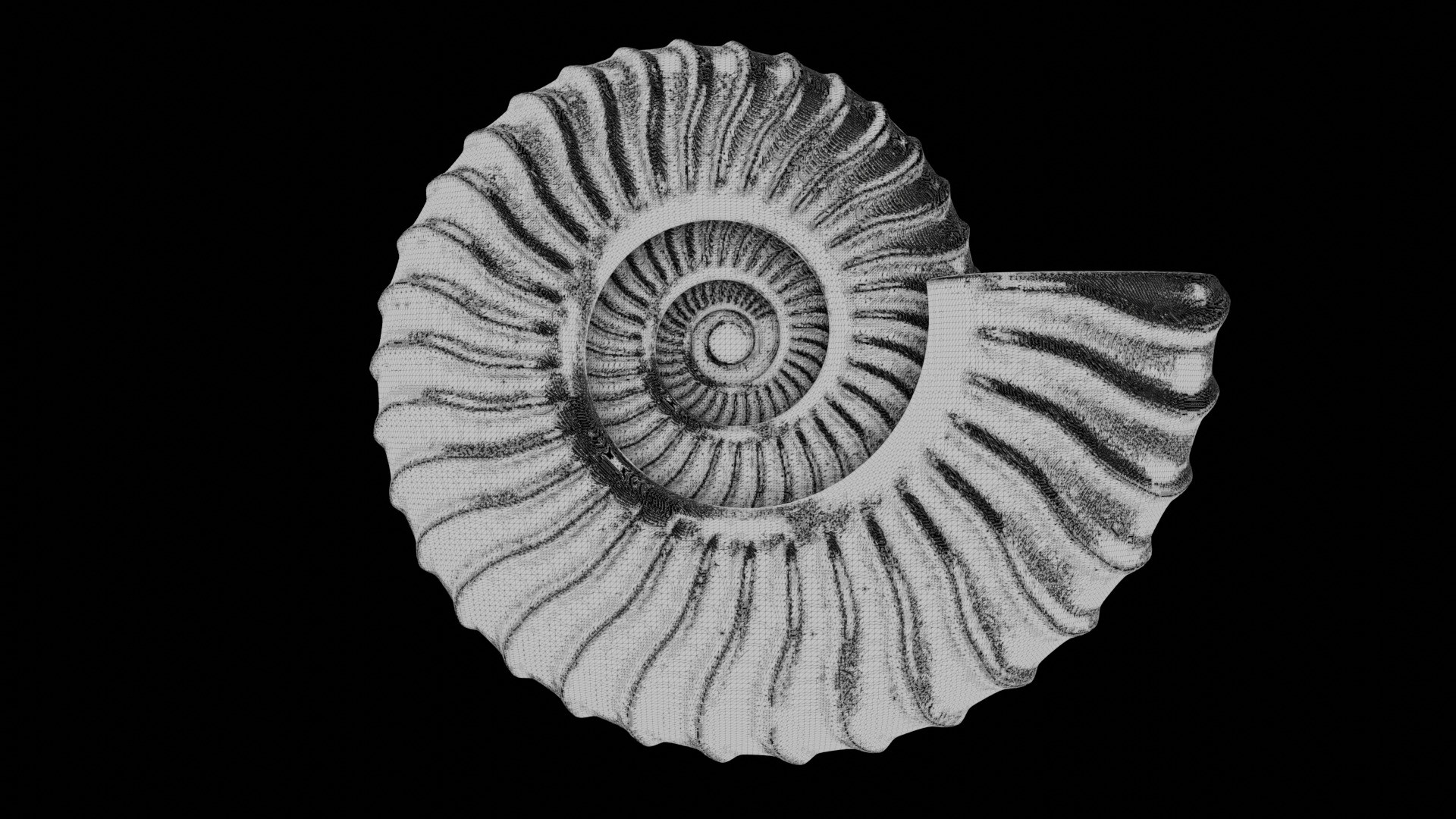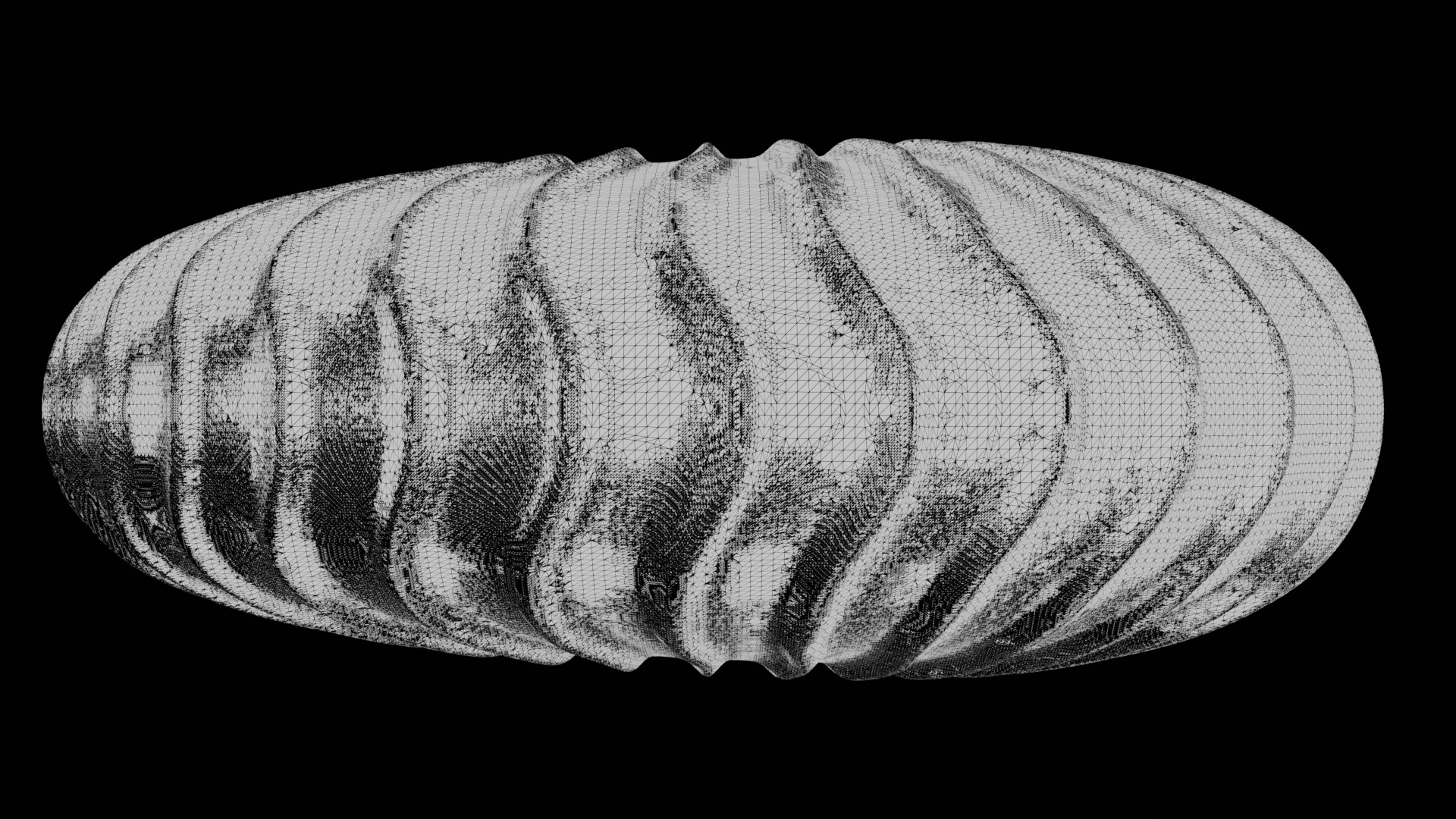
Ammonoid shell with falcoid ribs 3D model
Information: This model emulates a subevolute ammonoid conch, showing relatively moderately thin falcate ribs (Klug et al., 2015). Ammonoids are a diverse group of extinct cephalopods bearing an external shell similar to Nautilus but closely related to modern coleoids, a group that includes cuttlefishes, octopuses, squids, among others (Hoffmann et al., 2022) . These organisms inhabited the ancient oceans from the Early Devonian to the earliest Palaeogene period, reaching an interval of approximately 350 million years across the Phanerozoic (Landman et al., 2014; Landman et al., 2015; Lehmann, 2015). Fossils of this external conch represent one of the most common findings in marine assemblages, showing a highly diverse and abundant record around the world (Saunders & Swan, 1984; Dommergues et al., 1996; Saunders et al., 2004; Korn & Klug, 2012; Monnet et al., 2015; Morón-Alfonso et al., 2023, figs. 3-4). Because the ammonoid conch grew along with the animal soft-body, this structure frequently records valuable information including morphological modifications that occurred during ontogeny useful to study the paleobiology and paleoecology of this group (Kullmann & Scheuch, 1970; Kant, 1973; Korn, 2012; Korn & Klug, 2012; Erlich et al., 2016). By making a purchase, you are helping to fund future research on these fascinating creatures. If you're interested in exploring more fossil models, feel free to check out my profile for other options.References:Dommergues, J.-L., Laurin, B., & Meister, C., 1996, Evolution of Ammonoid Morphospace During the Early Jurassic Radiation: Paleobiology, v. 22, no. 2, p. 219-240.Erlich, A., Moulton, D. E., Goriely, A., & Chirat, R., 2016, Morphomechanics and developmental constraints in the evolution of ammonites shell form: Journal of Experimental Zoology Part B: Molecular and Developmental Evolution, v. 326, p. 437-450.Hoffmann, R., Howarth, M., Fuchs, D., Klug, C., & Korn, D., 2022, The higher taxonomic nomenclature of Devonian to Cretaceous ammonoids and Jurassic to Cretaceous ammonites including their authorship and publication: Neues Jahrbuch für Geologie und Paläontologie - Abhandlungen, v. 305, p. 187-197.Kant, R., 1973, Allometrisches Wachstum paläozoischer Ammonoideen: Variabilität und Korrelation einiger Merkmale: Neues Jahrbuch für Geologie und Paläontologie - Abhandlungen, v. 143, p. 153-192.Klug, C., Korn, D., Landman, N. H., Tanabe, K., De Baets, K., & Naglik, C., 2015, Describing Ammonoid Conchs, in Klug, C., Korn, D., De Baets, K., Kruta, I., & Mapes, R. H., eds., Ammonoid Paleobiology: From anatomy to ecology. Topics in Geobiology, vol 43, Volume Topics in Geobiology, vol This model emulates a subevolute ammonoid conch, showing relatively moderately thin falcate ribs. Ammonoids are a group of mollusks, more specifically cephalopods (which include octopuses, squids, cuttlefish, nautiloids, and others), that inhabited seas and oceans, first appearing in the Devonian period, around 419 million years ago. They went extinct alongside the dinosaurs during the mass extinction at the end of the Cretaceous period, approximately 66 million years ago. Ammonoids were a highly diverse and abundant group. At first glance, they resembled the modern Nautilus species, as they possessed an external shell that housed most of the animal's body. However, they are more closely related to coleoids, the group that includes octopuses, squids, and cuttlefish. Like the modern Nautilus, ammonoids had an external shell made of calcium carbonate (aragonite), subdivided into two components: the phragmocone and the living chamber. The phragmocone was divided internally by septa, which defined chambers connected by a ventral tube called the siphuncle. The living chamber contained most of the animal's body and was connected to the phragmocone via the siphuncle. The shell served not only as protection but also as the animal's primary buoyancy mechanism. The chambers contained air or another fluid of lower density than water, allowing the animal to regulate its position in the water column by controlling the amount of fluid in the chambers. This process is similar to how submarines fill or empty their ballast tanks to dive or surface. As the animal grew, the number of chambers increased, the size of the living chamber expanded, and consequently, the size of the shell also grew. Generally, ammonoids had shells that formed a flat spiral, but some species had uncoiled forms or deviated from this typical morphology, showing a wide variety of shapes and ornamentations. By making a purchase, you are helping to fund future research on these fascinating creatures. If you're interested in exploring more fossil models, feel free to check out my profile for other options.


